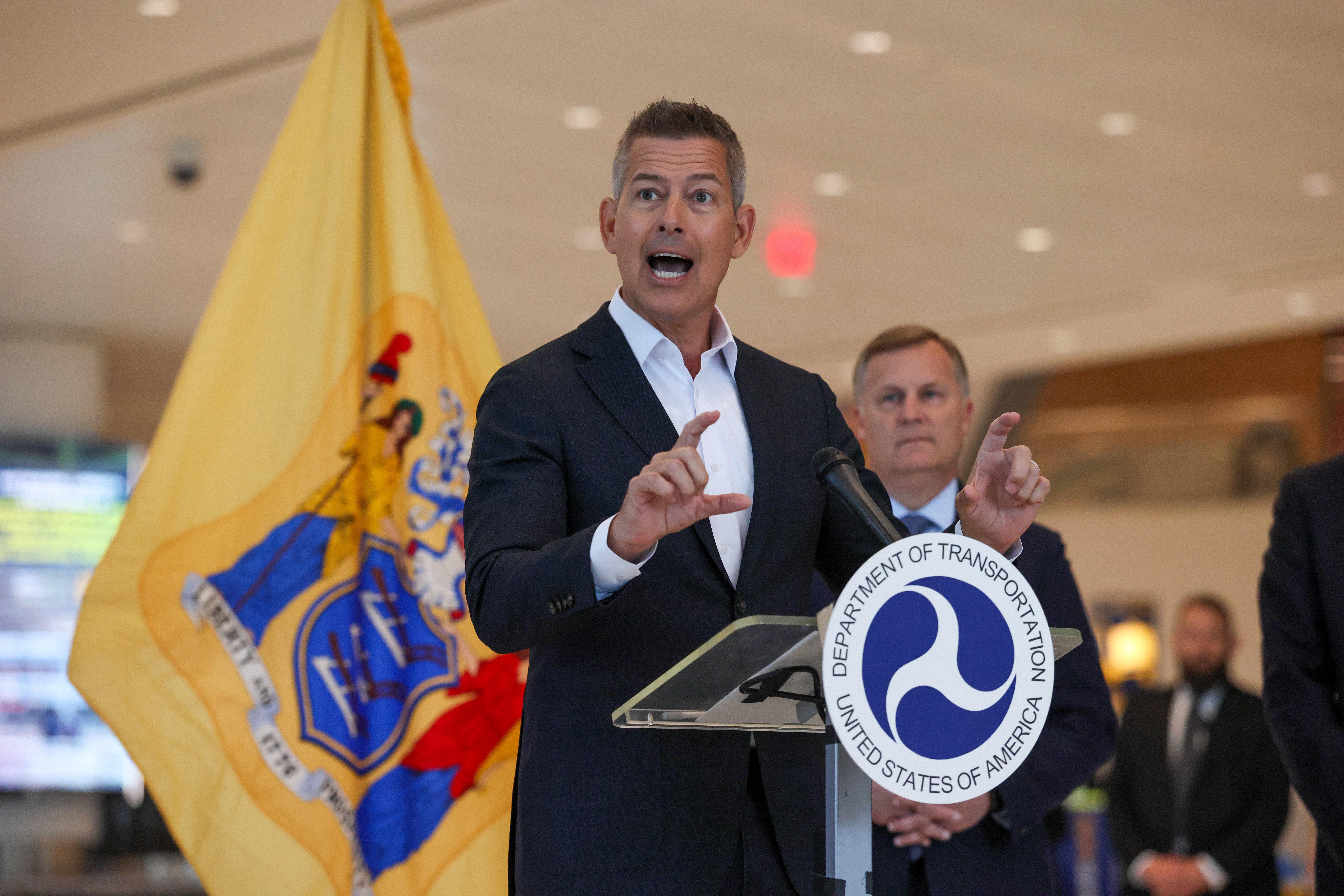Rare win for Newark airport as runway reopens ahead of schedule - potentially alleviating severe delays
Additional temporary and weekend closures may be introduced later this year as further work is completed at the airport.
Newark Liberty International Airport has reopened one of its runways ahead of schedule after the transportation hub has suffered recent technical issues.
Transportation Secretary Sean Duffy announced the development at an airport news conference alongside United Airlines CEO Scott Kirby, who said flights out of Newark are expected to be the cheapest in the airline’s history this summer.
The airport has faced recent air traffic control outages, a shortage of air traffic control workers and a struggle to keep up with demand during the revamp of Runway 4L-22R, an 11,000-foot-long strip.
“This key milestone puts us on a path to further reducing congestion, enhancing safety, and ensuring a seamless travel experience,” Duffy said. “With the runway completed, we’ll continue our work to harden the telecoms infrastructure and improving the staffing pipeline for the airspace.”

On Friday, the Port Authority of New York and New Jersey, which operates the airport, said the runway would reopen 13 days ahead of schedule after it was cleared by the Federal Aviation Administration.
Some of the work included improving milling, repaving the runway surface and improving lighting and drainage work. Runways are typically updated every 10 years and Runway 4L-22R had last been updated in 2014. The improvements reportedly cost $121m.
Still, Duffy noted issues remain at Newark and officials are working to return the airport to maximum capacity.
Last month, the airport shut down and was later closed nights and weekends for construction work. Officials plan to reinstate the weekend and night closures at the end of the year to complete additional work. When that does happen, two other runways will remain fully operational, officials noted.
The ongoing issues have resulted in passengers experiencing delays and cancellations. Airport air traffic controllers have also faced communication blackouts while directing planes. The blackouts reportedly stemmed from equipment failures, which caused the FAA to reduce the number of flights coming in and out of the airport.

Speaking to reporters on Monday, Duffy said: “The message I have for all of you is, no one here has created this problem... The problem has landed on our laps, but I want you to know that you have every asset that touches the problem, working together, coordinating, cooperating, collaborating, to make sure that as a team, we address the problem that exists at Newark.”
He added: “You can't snap your fingers and make it happen really quickly, because these things take longer than a week or two or even a month.”




Join our commenting forum
Join thought-provoking conversations, follow other Independent readers and see their replies
Comments